A Famous Landmark
America and Canada are home to one of the most famous landmarks – Niagra Falls. The falls have drawn major attractions since the 1800s, and tourists have spent 200 years visiting them.


This torrent has attracted many daredevils and photographers go to capture its beauty. But a sinister secret was revealed in 1969.
A Trickle
Many had grown used to the waterfall’s torrential waters, but they started dwindling in 1969. It became less and less until the water from the falls started trickling down.


There were some gruesome findings once the water ran dry. Once the public was made aware of these discoveries, even the bravest of daredevils were skeptical of visiting the falls.
Unusual
New Yorkers eventually noticed that the waters from Niagra Falls were becoming less torrential in 1965. They didn’t understand why but it couldn’t be anything good.


They had never seen anything like it before and were worried about it. They all wondered if they could do something to bring back the water and restore the falls to their former glory.
Rocks
There are three waterfalls that form Niagra Falls, one of which is the American Falls. Many say that it is unstable and self-destructive.


The landmark was slowly being eroded by the water thundering down. The waters push rocks forward, and they fall to the bottom into a pile. This pile is referred to as a talus and was so tall that it reached halfway up the cliff.
Blockage
Years of rock were piled high, blocking the water that usually fell from the falls. This led to a decrease in water flow being pushed out.


People who lived nearby were concerned that the pile of rocks ruined their view of the American side. It was obscuring what they could see of the falls.
Concerns
Their biggest concern was that if the waterfall lost its beauty, they would lose revenue on their side of the falls. They would lose tourists to the other two falls, and they didn’t think they could afford that.
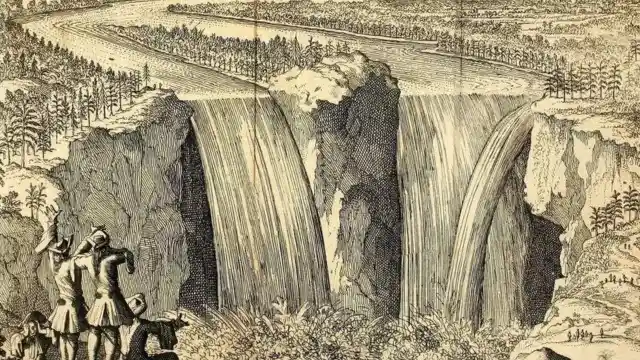

This led to the residents of Niagara Falls, New York, launching a project to keep the falls beautiful.
American And Canadian Authorities
They and the Canadian authorities wanted the waterfall restored and contacted the U.S. Army Corps of Engineers. They proposed a plan for the restoration and prayed that it would be approved after their review.
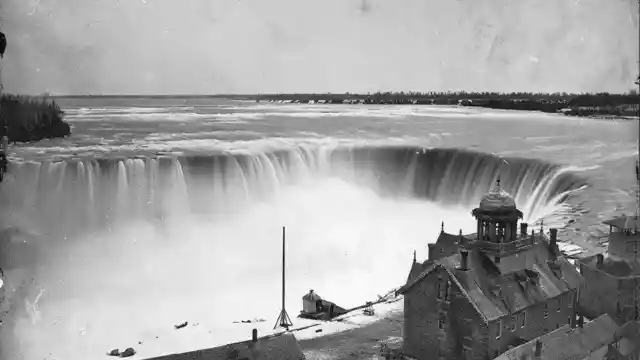

But they never anticipated their plan wouldn’t be so easy to execute. There was more to it than they had expected.
Their Plan
They couldn’t start the restoration of the falls because there was still some flowing water. They wouldn’t be able to get a sufficient enough look at the talus before they stopped the water completely.
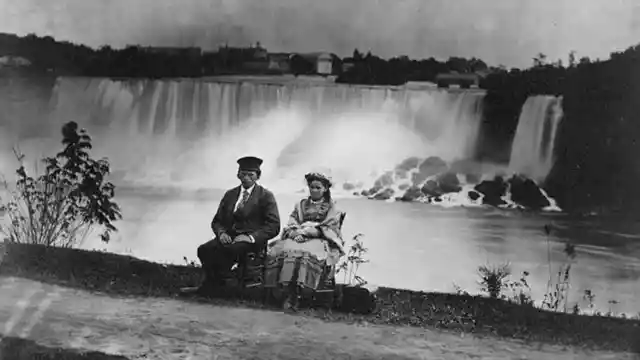

They had planned to get rid of 280,000 cubic yards of the talus so they could return the falls to its former glory. They only started working on the project in June 1969.
What They Required
The engineers began transporting 27,000 tons of earth and rock to the falls to build a cofferdam. This was the main part of their plan.


They wanted to use the cofferdam to pump the water away from where they needed to work. They required a dry area to work on their project.
Clearing The Area
They used the cofferdam to move water from the American Falls to the Horseshoe Falls. Niagra Falls was bordered on both sides by the Horseshoe Falls.
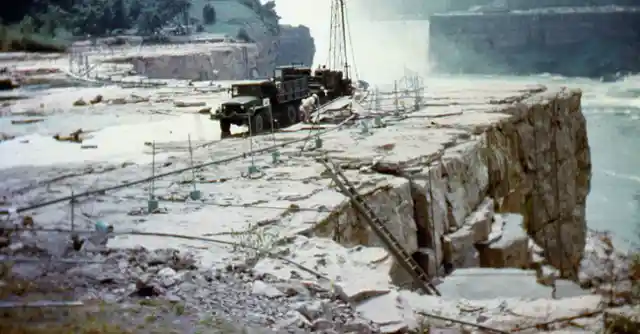
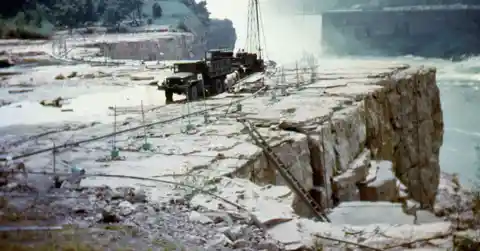
They cleared the area by diverting the water and draining it. The engineers could now see the bottom of Niagra falls without much trouble.
Unexpected
Understandably, they expected to see geological features that wouldn’t have been visible for close to 12,000 years. And that was indeed what they found.
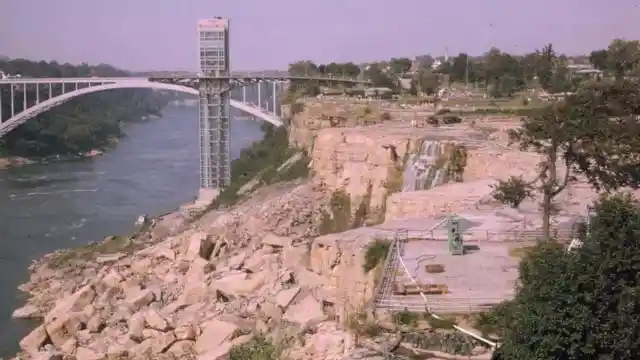

But among those geological features, there were more things to be seen, and those things made their discovery a truly shocking sight.
Secrets Revealed
At the bottom of the falls lay talus rock, other geological features, and human remains.
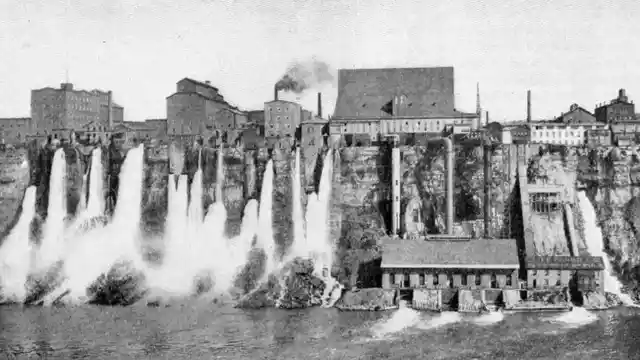
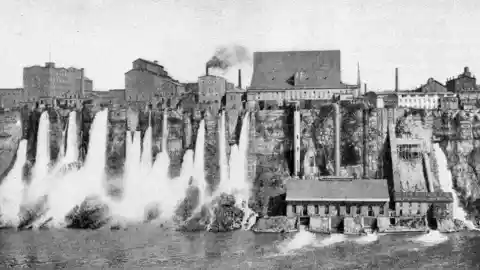
Tourists first saw the remains of a man and a woman on the riverbed below. And their discovery had raised quite a lot of questions as well as a few rumors.
John And Jane Doe
Unfortunately, no one knew who the two people were though many rumors were flying around, particularly about the man’s body. One story suggested that the man had jumped to his death from the falls.
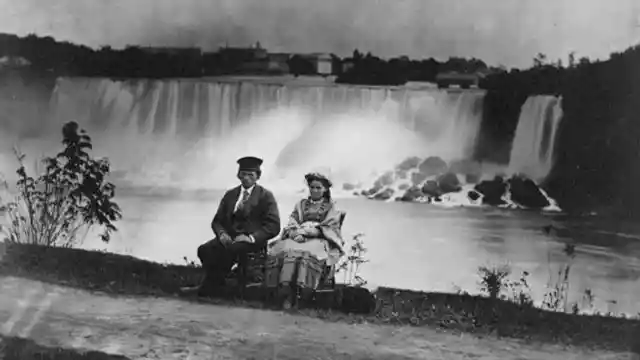

However, no one knew who the woman was or how she had ended up there.
Long Dark History
No one could blame the engineers for being somewhat disturbed by what they found. Finding the remains of two people in your workplace is not the first thing that comes to mind when you wake up in the morning. So who could blame them?


But the discovery also led to suspicions rising. Many were even more surprised that no more bodies hadn’t been found, especially considering the history of the falls.
Statistics
The figures indicate that between 1850 and 2011, roughly 5,000 bodies were found at the bottom of the falls. That’s why it was so strange that only two were found at the bottom of the falls in 1969.


Statically there are between 20 to 40 suicides committed at the falls every year.
Do A Barrel Roll
In 1829, a man called himself “the Yankee Leapster” jumped from a tall tower into the gorge below the falls. Luckily, he survived. Sam Patch started the long tradition of daredevils trying to make it over the falls without dying.
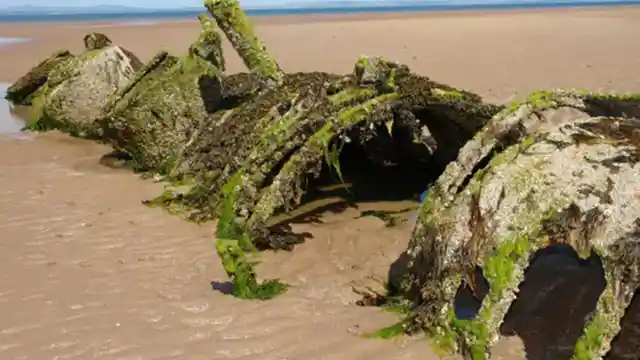

Since then, thrill-seekers have taken the daring plunge from the falls’ peak, having built inventive barrels and casks to topple over the falls. Sadly, only a few have survived the audacious feat.
Daredevil
The most famous survivor is arguably Annie Edson Taylor, who took the plunge over the falls in 1901, cradled inside a wooden barrel.


The adventurer reportedly said, “No one ought ever to do that again,” after her triumph. Sadly, many didn’t heed her warning, which explains some of the found remains.
Wishing Well
Being less dreadful but more disruptive, millions of coins were also found in the talus collection in 1969.


Presumably, many people used the falls as a wishing well or something along those lines. But coins and bodies aside, the engineers still needed to get the falls gushing with water again.
Realizations
Believe it or not, engineers decided to leave the eroded talus as it was after the intense and wildly expensive construction at the American Falls. This came after their realization that the wall of rock supported the cliff face behind.
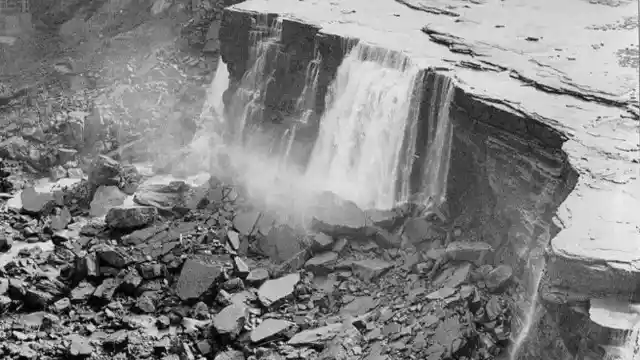
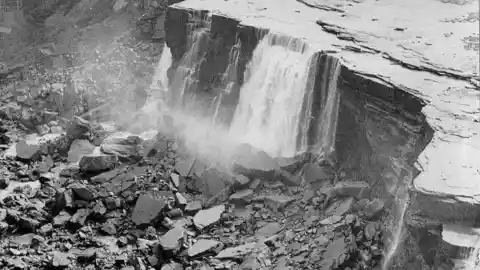
Though it sounds absurd, the project didn’t go without purpose.
Restoration
It allowed the engineers to give the American Falls some much-needed TLC.
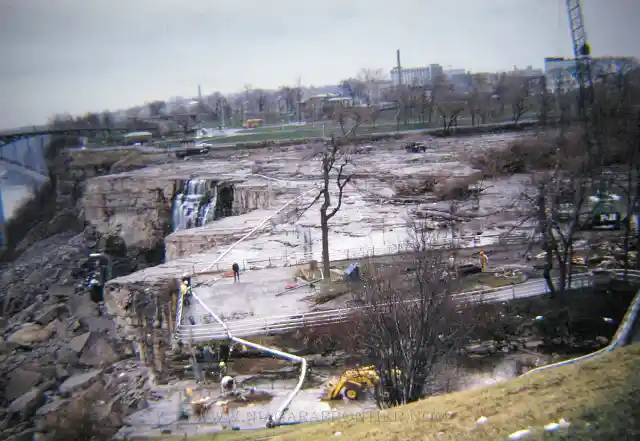
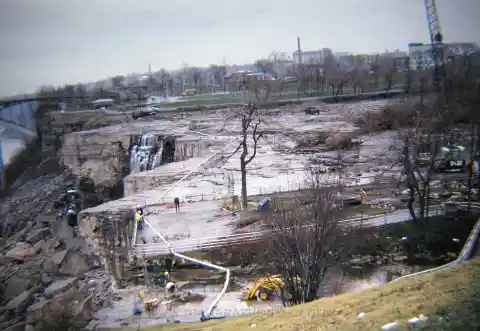
With the help of anchors, bolts, and cables, the U.S. Army Corps of Engineers worked hard to stabilize the falls so they could have the support they needed to glisten and gleam for years to come.
Conclusions
The International Joint Commission concluded that “man should not interfere with the natural process.” Nevertheless, recent years have spawned talks of once again dewatering the falls but not for the same purpose.
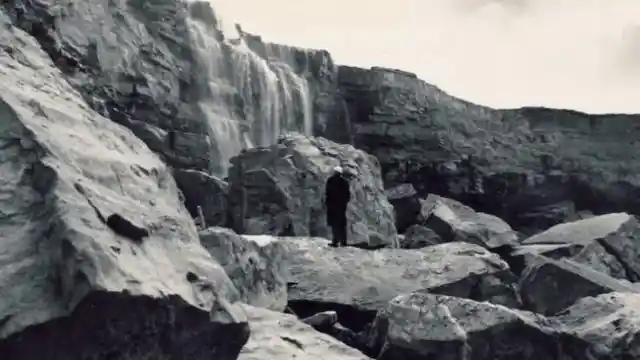
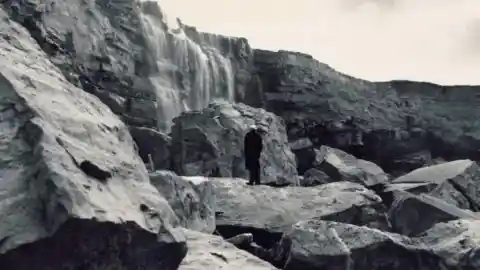
This time they want to do it in hopes of restoring bridges. Experts know this could reveal essential details from history.
Detroit Lake
It was a lesson they learned from draining a water reservoir.
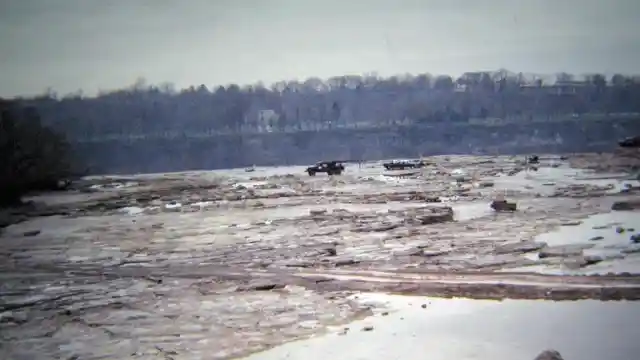
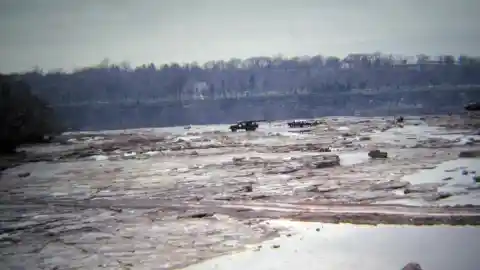
The discovery took place about 100 miles away from Portland, Oregon, where the Detroit Dam on the North Santiam River creates a reservoir known as Detroit Lake. The lake provides water for the city of Salem — and intrigue every autumn.
Run Dry
The Detroit Lake runs almost completely dry towards the end of every year. This event exposes the cracked, grassy surface that brings locals to the Marion County mountains in droves.
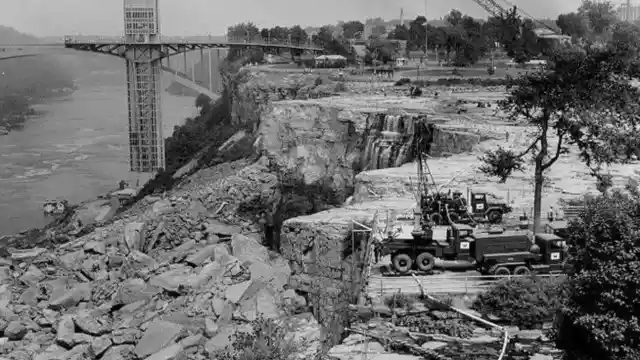
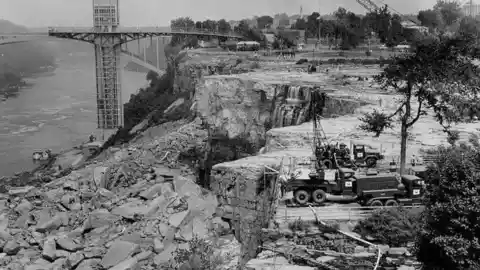
But is it the lake’s barren surface that draws them in? The answer is no, not exactly. They come to the lake to see something far more intriguing.
Rich Past
During the fall of each year -usually between October 1st and January 1st- travelers pull off Route 22. They do this in hopes of catching a glimpse of the lake and the history it holds in its soil.


When the lake is barren, it reveals a piece of the area’s rich past that juts from the soil like a troop of two-foot- soldiers.
Creepy Atmosphere
Tree stumps pepper the landscape like remarkable vestiges of the past. It gives the place a rather eerie atmosphere.
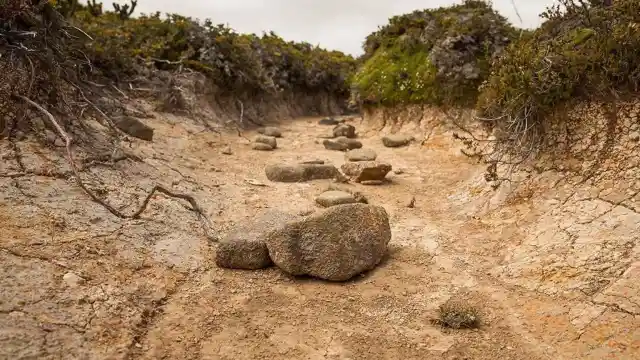
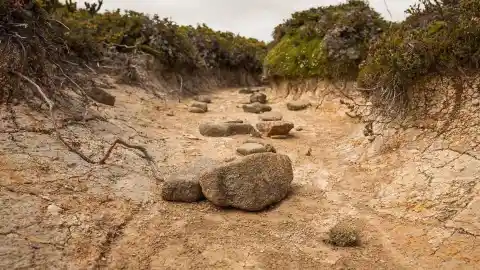
If you touch a stump, you won’t feel the familiar bark, however. Instead of the rough texture, you might expect, you’ll feel a thick, bloated stump that belongs to the depths of Detroit Lake.
More To It
Most visitors who come to the lake for water sports thought the stumps, as attractive as they are, were all that was left for the drained lake to offer during the dry season. But that wasn’t the case.


In 2015 a drought drained the lake, and when that happened, the depths of the reservoir were exposed.
Taking A Chance
Because of the drought and the lack of snowfall in the Cascades that year, the water level of the lake dropped 143 feet below its capacity.


A deputy at Marion County Sheriff’s department named Dave Zahn saw this low water level as an opportunity to explore the land beyond the stumps.
Deputy Dave
“I went on a treasure hunt down along the river, figuring I’d find foundations or something like that,” Deputy Dave said.


He wandered along the dried-up lake bed, looking out at the vast area as he grazed the stumps with his fingertips. But then, to his surprise, something in the distance caught his attention.
Oddity
In a part of the lake bed that had been hidden underwater for over 70 years, the deputy saw something odd.


At first, it looked like it might’ve been a fat tree branch in between two stumps. But as he neared the oddity, he could clearly see what it actually was.
Spokes
There was a wagon sticking out of the mud, and it wasn’t all broken up either. It was complete with massive spoked wheels and a spring seat. But how did it survive in the water for that long?


Low oxygen levels in the reservoir preserved the piece of history almost perfectly, including a metal plate with some telling details.
Manufacturer
The metal plate revealed that the wagon had been built in 1875. It was manufactured by the Milburn Wagon Company of Toledo, Ohio, which was the biggest wagon manufacturer in the U.S. at the time.


It was a simple discovery, yes, but one that had an immeasurable impact on the local community.
The Full Story
The discovery of the wagon reopened the past, especially for the locals.


Even though the history of Lake Detroit wasn’t exactly a well-kept secret, not everyone knew it. And it didn’t hurt for Oregonians who might not know the story to ask what the story behind the wagon and all the stumps was.
History
The area’s charming history soon consumed the locals, who were intrigued by the discovery of the wagon, and the story went like this.


In the 1880s, pioneers — who were likely steering carts like the one Deputy Dave found — left Michigan for the Pacific Northwest. They made a settlement along a river.
New Detroit
The pioneers had called their settlement “New Detroit.” Of course, they named it after their home state’s largest city.


The settlement of New Detroit could never match the size of its namesake. But that didn’t stop the people who founded the settlement from growing. And in the end, their population did grow to about 200 people.
Small But Thriving
The small community of New Detroit was nestled in a pocket of trees, and at first, it housed builders who worked on the Oregon Pacific Railroad.
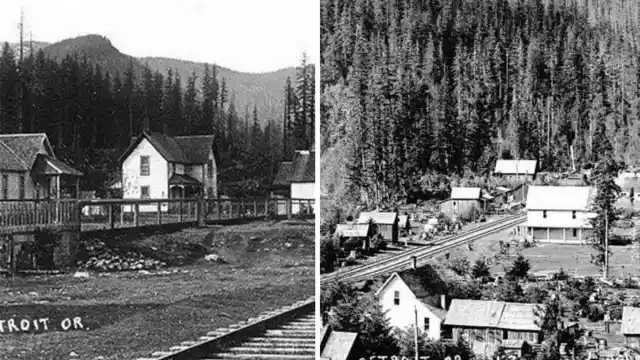
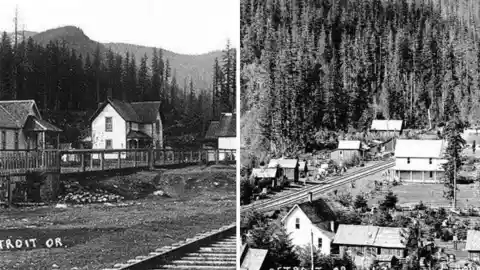
But with time, it started growing larger, and by then, it thrived on its own merit as citizens built cafes, churches, hardware stores, and logging companies.
Dammed
For approximately 70 years, the small settlement continued to grow. But then Congress had to come up with a plan to help out the farmers and downstream towns that were getting obliterated by a constantly-flooding North Santiam River.
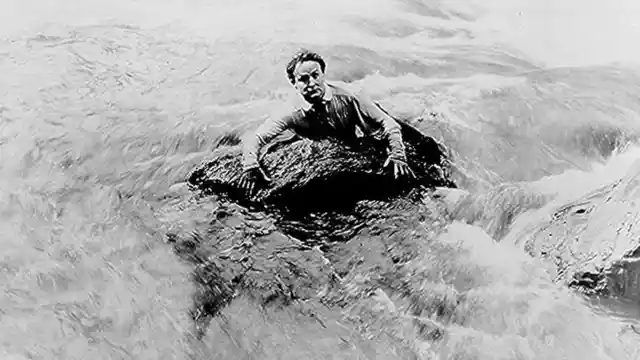

Their plan was to construct a dam to prevent the flood waters from reaching the farmers and downstream towns.
Flood Control
The 463-foot-high dam was built for the purposes of electricity generation, irrigation, and, most importantly, flood control. But the New Detroit residents knew that its creation meant the demise of the humble settlement they’d built up over all those years.
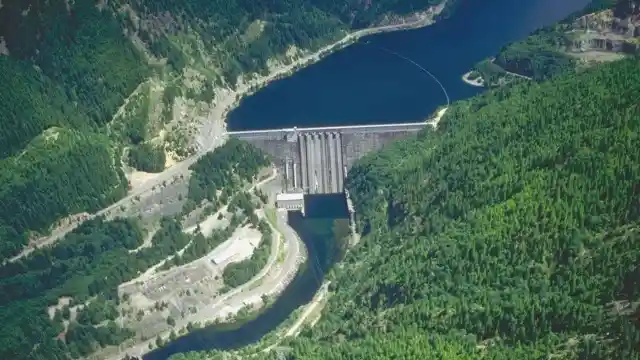

In 1952, after World War II, the Army Corps of Engineers arrived.
Stumped
The Army Corps of Engineers cleared an area of over 3,000 acres of its trees. That would be the spot that would house the dam’s reservoir.
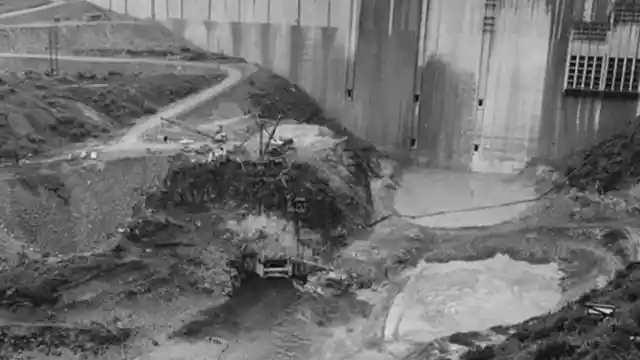
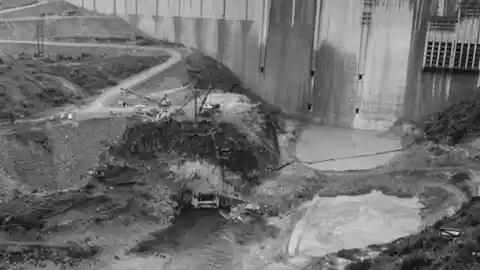
Little did they know that they were creating something that would be a local attraction over seventy years later. The area that is now known as “The tree stump garden.”
Feeble Protests
Of course, the residents of New Detroit protested against the destruction of the settlement they spent years building but to no avail.


However, even though things looked grim for them, this was not the end of New Detroit, which by then was alive and buzzing with automobiles instead of horse-drawn carts!
Moving Day
Residents who’d grown fond of their little corner of the world simply packed up and moved to the top of a plateau about one mile away.
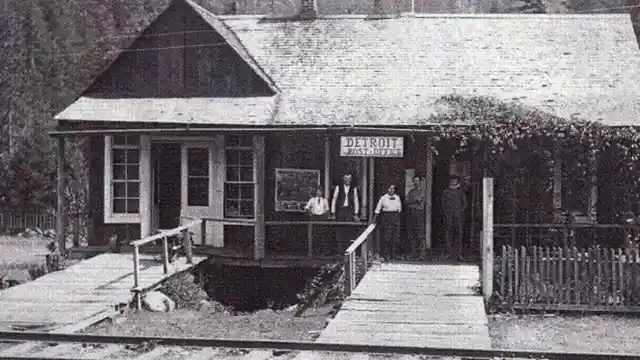

But it still must’ve been a very haunting experience for them to watch the water turn their old settlement — including the wagon — into a ghost town!
In The Light
But thanks to Deputy Dave and his lake bed exploration, this part of New Detroit’s history was brought to the light once more.


That well-preserved wagon he found, which experts believed had never before been exposed until that 2015 drought, triggered an entire area’s interest into their humble and colorful past!
Ancient Secrets
New Detroit proves that we might not know as much about our history as we think we do.


In a story similar to Deputy Dave's discovery, a team of archeologists recently learned a lesson during one of their digs. The team uncovered an ancient clue that led to yet another completely forgotten past.
First Claims
The First Nation indigenous to British Columbia’s Great Bear Rainforest, the Heiltsuk people, have laid claim to the remote Triquet Island for nearly 5,000 years.


But their claims have fallen on deaf ears as archaeologists kept dismissing their claim of ownership. But why is that? Well, the is one glaring reason.
Ice Caps
The continental glacier that formed over Canada during the last Ice Age would’ve also covered Triquet Island, making it uninhabitable.


But even with the facts stacked against the Heiltsuk, a small group of researchers took it upon themselves to uncover the truth that is hidden there once and for all.
Excavations
The archaeologists began an extensive excavation of the remote island in the hope of discovering some traces of a past civilization. But they never expected to find something so big.


The discovery they made on the island not only shocked the entire archaeological community, but it also changed history forever.
Can You Dig It?
Beneath several layers of earth, the archeologists found remnants of an ancient, wood-burning hearth. But how could that be?
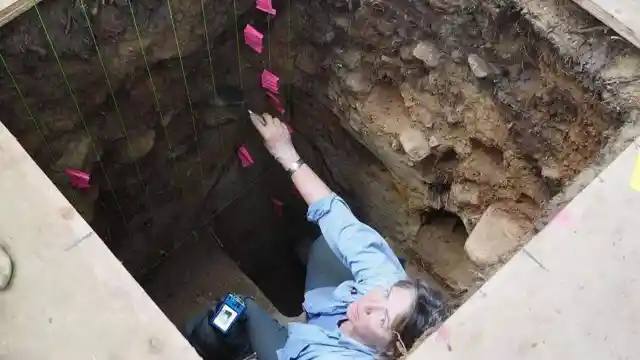

According to researchers, it would’ve been impossible for humans to dig their way through the glacial ice to get to the soil below. Yet, that wasn’t the only thing they found during their dig.
More Artifacts
As they continued digging, researchers unearthed a few additional artifacts. Some of the artifacts they found included tools and even weapons.
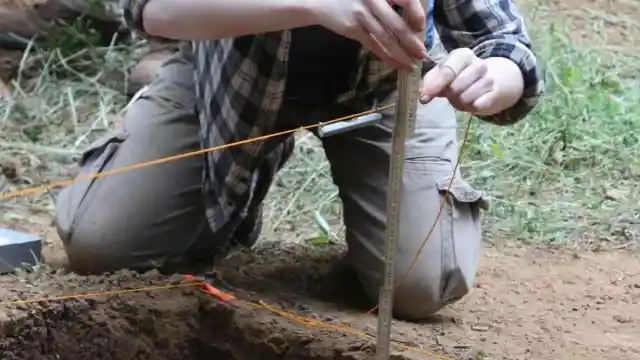
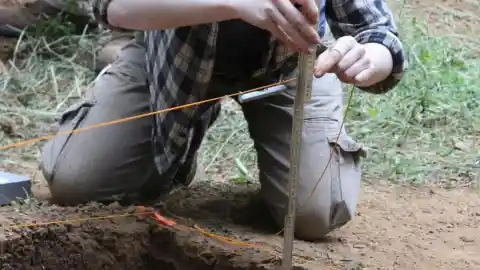
This discovery stumped the team as it was known that the Heiltsuk people didn’t traditionally use those kinds of tools. But if they didn’t belong to the Heiltsuk people, who did they belong to?
Food Source
The Heiltsuk people derived their food source from fishing and smoking salmon. They utilized small, precise tools to harvest the fish.


However, the tools and weapons found at the dig site were much larger and likely would’ve been used to hunt large sea mammals, such as seals, sea lions, and walruses.
More Discoveries
But again, that wasn’t all they found. During their dig, the team also uncovered shards of obsidian, a glass-like rock only found in areas of heavy volcanic activity.
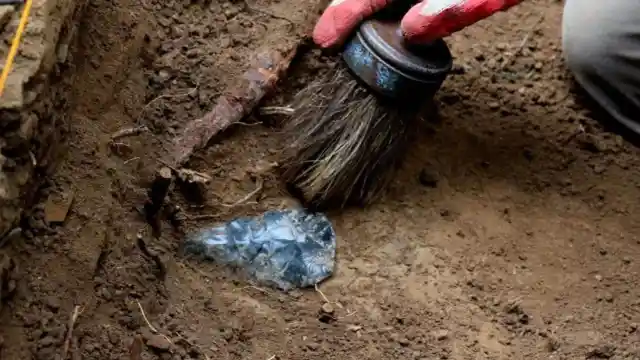
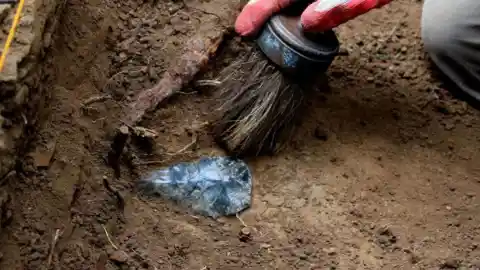
This discovery was another that puzzled the archaeologists, as there were no known volcanoes near that part of British Columbia. So, how did this rock — and these people — get there?
Deductions
The historians deduced that whoever it was that left those artifacts behind must have traversed the land bridge that existed between Siberia and Alaska during prehistoric times.


But that information alone wasn’t enough for the researchers. They still needed cold-hard facts to prove that what the historians said was true.
Time To Date
Luckily, a closer inspection of the hearth revealed ancient charcoal remains. The archaeologists took those remains and quickly brought them to the lab for carbon dating.


When they received the results, the researchers couldn’t believe their eyes—the evidence what right in front of them. The charcoal remains proved that everything they knew was a lie.
Carbon Dating
According to the carbon dating report, those bits of charcoal that were found on Triquet Island were an astonishing 14,000 years old. That meant that they were the oldest carbon remains ever to be discovered in North America.
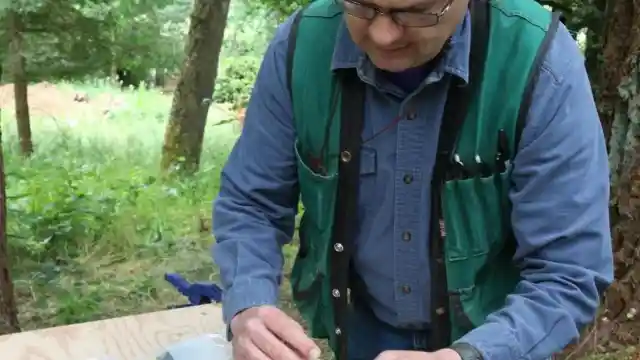

It was a remarkable discovery, but it gave the archaeologists more questions than it did answers, especially when they dug a little deeper.
Even Older
Those pieces of charcoal weren’t only an extraordinary find by American standards but by global standards as well.


After all, those simple pieces of charcoal were older than the Great Pyramid of Giza and even predated the invention of the wheel! But that’s not the most remarkable fact about this discovery.
Contrary To Beliefs
The 14,000-year-old discovery placed the earliest Heiltsuk at Triquet Island 2,000 years before the end of the ice age.


If the Heiltsuk was there 2,000 years before the end of the ice age, a time when it couldn’t have been covered by the massive continental glacier, did they transverse the land bridge?
Out Of Time Artifacts
Since Triquet Island was surrounded on all sides by water, the early Heiltsuk must’ve used boats to traverse the open waters in order to get there. However, it is believed that boats were not invented until centuries later.
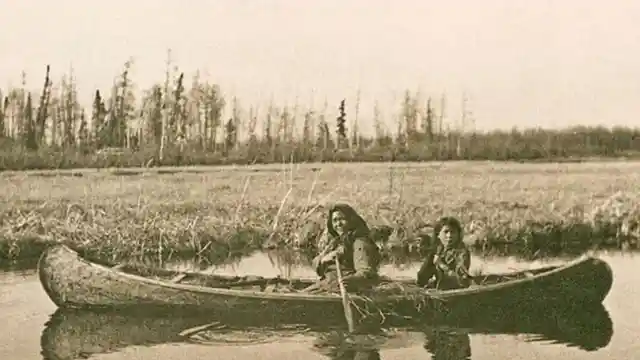

So how did the early Heiltsuk arrive on Triquet Island? Were boats used earlier than we thought? Or did they get there by some other means?
Earlier Than Expected
This discovery proved that the Heiltsuk settled on the Triquet Island 2,000 years before we initially thought they did. If that was, in fact, the case, then these early men likely crossed paths with some of history’s most formidable beasts.
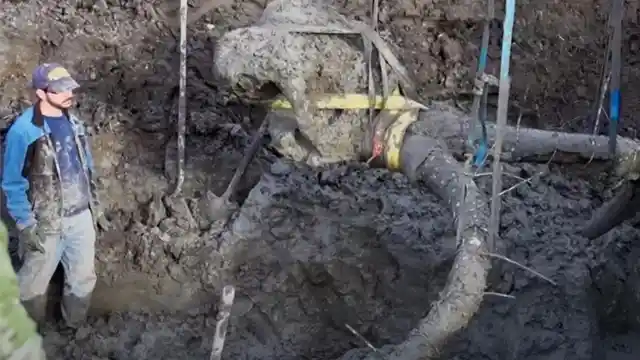
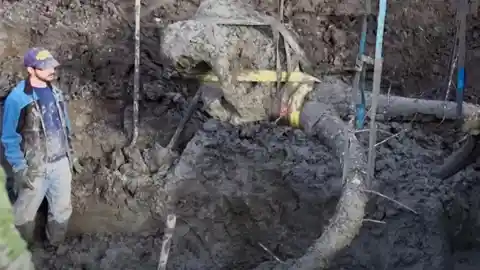
But how did they survive in the presence of such fearsome giants?
Land Bridge
As the Heiltsuk people made their way south from the land bridge, it is easy to assume that they likely had to fend off giant creatures like mastodons, woolly mammoths, and giant sloths.


Yet somehow, these early humans survived the creatures of the past, and it’s likely for one crucial reason.
On The Level
Their survival is likely due to the Pacific Ocean itself. The sea level at Triquet Island remained constant for over 15,000 years.


So as the sea gradually eroded the surrounding islands, the great beasts of the Pacific Northwest were kept at bay, leaving the Heiltsuk to a peaceful, secluded existence.
Oral Tradition
The most astounding realization that has recently come to light is the fact that the Heiltsuk people were able to preserve their history orally for nearly 14,000 years. As with some other tribes, their stories were passed down from generation to generation, keeping them alive for thousands of years.


However, they are still being deprived of their history’s legitimacy.
Disrespectful
When the media caught wind of the story, they seemed to focus more on what the discovery meant for the scientific community and our understanding of our past rather than acknowledge the rich history of the Heiltsuk.


To many, the media’s portrayal of the nation was seen as highly disrespectful.
Shifting Focus
As a result of this misunderstanding, University of Victoria student Alisha Gauvreau — who was present during the excavation — has dedicated herself to shifting the focus of the dialogue toward the Heiltsuk people and the history they have long carried with them.


All the Heiltsuk wants is to have their land claim acknowledged, and after 14,000 years, we can understand why.
They've Got The Spirit
Today, the Heiltsuk people’s land claim of Triquet Island stands as one of the oldest land-ownership claims in the world. They are determined for it to be recognized, and the evidence points in their favor.


But the evidence also does more than just that. Not only does this discovery speak volumes about the strength and perseverance of the Heiltsuk people, but it also represents the indomitable spirit of mankind.
The River Thames
In the UK, there’s a river that contains over eighty islands. Its waters vary from freshwater to nearly saltwater, and it houses a variety of species. That river is known as The River Thames.


The Thames is old. So old, in fact, that it managed to see the changes in time. From the modern day to the victorian era and beyond, a river such as this one is bound to hold some secrets.
Second-Longest River In The UK
Coming in at 215 miles, The Thames is the longest river in England and the second-longest river in the UK.


Along the length of this great river, there are marks that date back to Pre-Roman Britain. Some of these marks include a variety of structures such as navigations, bridges, and burial mounds.
Steeped In History
From these structures, it’s clear to see that this is a river steeped in history. But are those structures the only things we have left of the times that passed?


Or could there be more artifacts lurking beneath the waters that have been flowing there for such a long time?
Occasional Draining
The River Thames gets drained on occasion. Of course, since the river is so large, the draining has to be sectionalized since there simply isn’t a way to drain the river and all its branches at once.
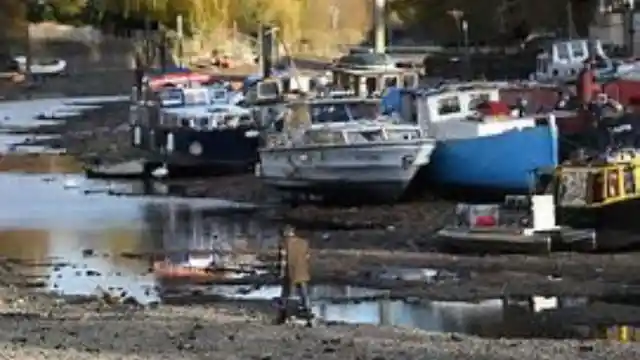
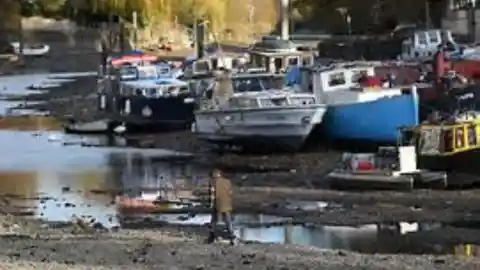
But why would they possibly want to drain the largest river in England?
Sectional Repairs
The answer is rather simple. Since the river is so old, they need to repair the damage caused over the years. The brick that lines the river starts disintegrating over time and needs to be replaced; otherwise the barriers will collapse.
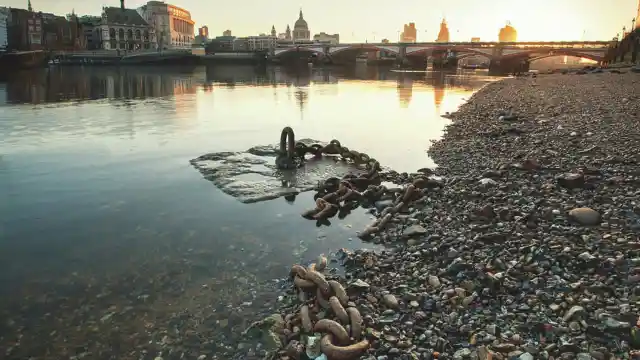

But that’s not all. The draining also allows them to give the sections a good cleaning.
What Lies Beneath?
Once the sections are drained, crews move in to clear up all the rubble, which gives us an opportunity to see what is hidden in the depths. Mostly all they find is common trash, such as bicycles and lawn chairs.


However, that’s not all the majestic river has to offer.
Pieces Of History
On occasion, the crew will also uncover pieces of history that have long been hidden beneath the murky waters. Sometimes all that’s needed is to do a little digging, and the crew has no problem getting their hands dirty to find an artifact from years gone by.
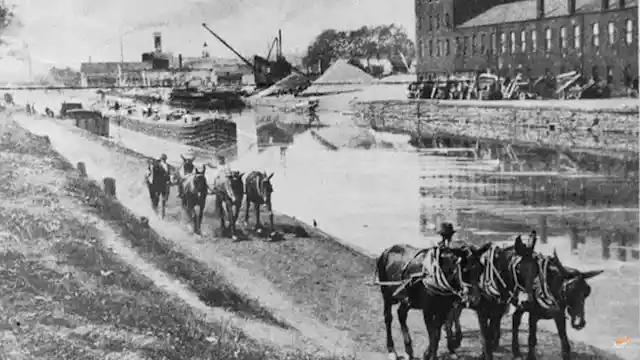
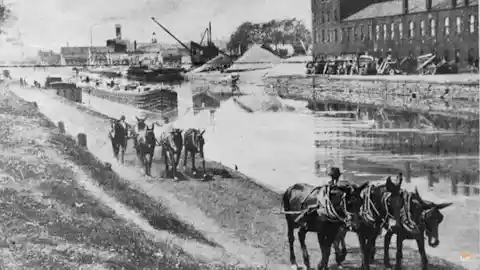
However, we all know that such finds are rare, so have they actually discovered something that’s worth looking into?
Victorian Age
Most of the artifacts found were from the Victorian era. These include bottles used for drinks, bird cages, and lanterns. However, some of these things are rather common and are sold for relatively low prices at antique stores.
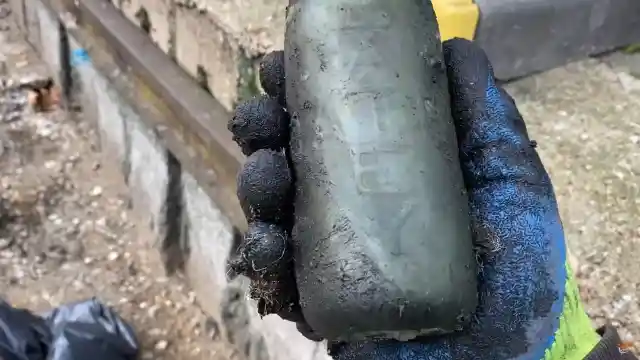

Isn’t there something that gives us more of an insight into our past?
Lawn Furniture
Among the more modern items found there are things like lawn furniture. Statues that are used to put between plants or to bring a more magnetic feel to the garden. There are also lawn chairs, idols used for worship, and a common find is bicycles.


Even though those finds all have a story to tell, it’s not the one we're looking for.
Household Decorations
What about the household items like dolls, music players, and ceramic figurines? Unfortunately, they are also from the more modern times and don’t give us any clues into the UK’s past.


But is that really it? Couldn’t they find anything older in a river that has transferred through time itself?
A Look Into The Past
As the crew was digging, they stumbled upon a horseshoe which is strange considering that there are no horses being kept in the area. But that doesn’t mean they never were kept near the river.


Let's look at what took place in that section of the river approximately 200 years ago.
Boats That Traveled The River 200 Years Ago
200 years ago, the boats that were used on the river didn’t use engines like they do today. Instead, they were pulled through the water by horses who walked next to the river. The stables they were housed in still exist today.
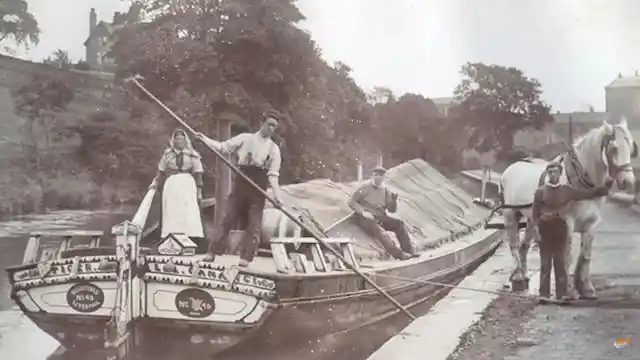
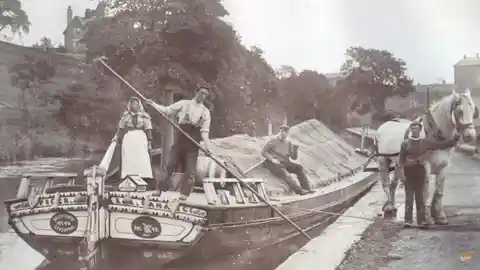
But horse-drawn boats didn’t come without problems, though.
Problem With Tunnels
Unfortunately for the sailors back in the day, the horses couldn’t pull them through tunnels, which left them in a bit of a predicament. How could they get their boat through the tunnel if they weren’t being pulled?
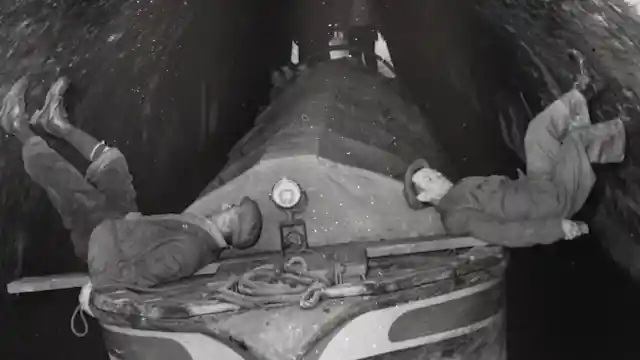
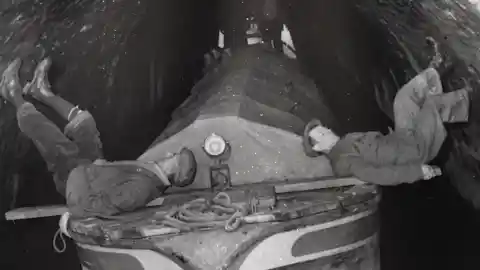
The term “legger” was used for the men who used their feet to push the boat through the tunnel so they could get to the horses waiting on the other side.
Older Discoveries
But that wasn’t the only discovery or even the oldest find produced by The River Thames. Some of the other discoveries include weapons such as swords and various other types of ammunition.


It also isn’t uncommon for these kinds of memorabilia to wash up along the shores. But what other pieces of history have been produced by the river?
World War 1 Memorabilia
Some of the other artifacts that were found include a helmet from World War 1 and a sword of indeterminate age. There was also a discovery of a wide array of bombs and other explosive devices that are remnants of World War 2.
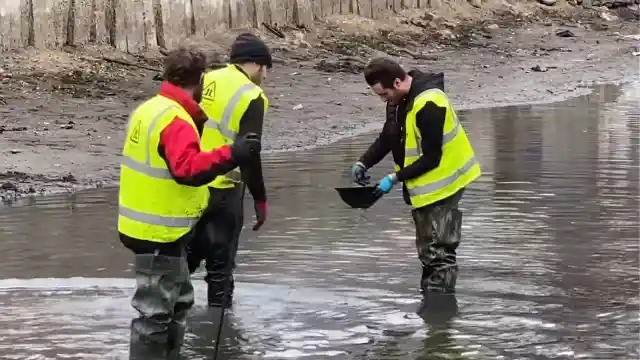
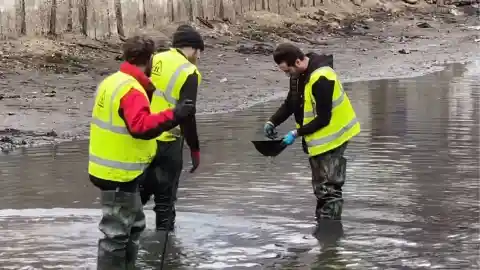
So be cautious when walking along the shores because you never know what might wash up.
Tokens Of Affection
Some of the more personal findings include Roman bone hairpins, a Medieval knight’s knuckle guard, beads, and rings, like the ones pictured above.


The ring on the right is a post-Medieval ring dated to 1668, and the one on the left is estimated to be from the late Victorian era.
Various Small Items From Different Ages
There were also various other small items found in or around the Thames. Some of these include a sealed ‘ointment’ bottle from the seventeenth century, a pilgrims badge from the sixteenth century, and a lead sundial from the seventeenth century.


But those were still not all that was found in or around The River Thames.
Roman Artifacts
There were even discoveries of Roman and Pre-Roman artifacts. Now it isn’t uncommon to stumble upon a lost coin, not even in the Thames river, but what if that coin isn’t from modern times?


Some coins have been found that date back to Pre-Roman Britain. Now that’s a precious find, wouldn’t you say?
In order to protect the privacy of those depicted, some names, locations, and identifying characteristics have been changed and are products of the author's imagination. Any resemblances to actual events, places, or persons, living or dead, are entirely coincidental.